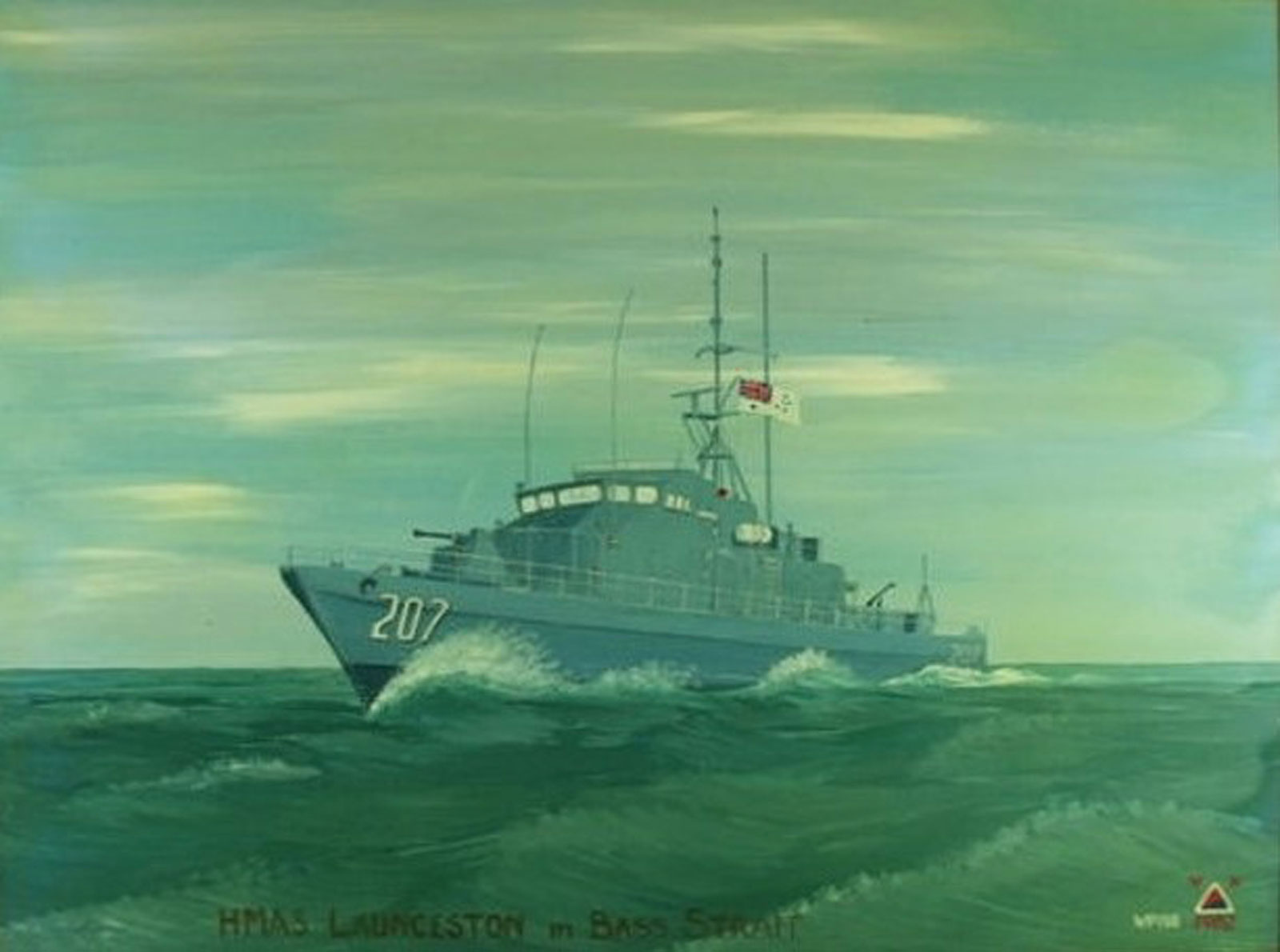HMAS Launceston

HMAS Launceston on patrol in Bass Strait.
- About Norman Wills
Norman was born in Elsternwick, Victoria. Norman enlisted in the Australian Army at 29 years. He served alongside the 2nd/3rd Australian Light Anti-Aircraft Regiment as a Lance Bombardier during WWII.
After his discharge, Norman suffered from Malaria and moved to Queensland to live in a warmer climate. While in Queensland he worked as a clerk for the Cobb & Co. Bus Company and at Peters Slip as a Paymaster. Prior to his retirement, Norman wrote short stories which were published using the pseudonyms, “Jock” or “Coral Grove.” Often these stories were about war experiences.
Norman moved to Wellington Point in 1981. He planted Coral Trees at that residence and donated some to the Redlands City Council for footpath planting. His passion for Coral Trees (Erythrina) grew and he had a large property in Rochedale where he researched, bred and grew many different kinds of them, and sent their seeds around the world.
In his spare time Wills drew, painted and documented hundreds of war scenes and donated some to the local Redlands Museum. When finished, he left a unique artist mark on them; a distinct red, blue and white triangle symbol, representing his alliance with the 2nd / 3rd Australian Light Anti-Aircraft Regiment. Wills took great care in the accuracy of his paintings and ensured they were scaled and coloured exactly. It is believed that he donated many of his works to RSL Clubs around the country.
Wills died on 13 March 1991. It was his request that his ashes be scattered in Moreton Bay. This was arranged with the Navy who provided a small launch for the brief service and scattering of the ashes.
- About HMAS Launceston (ll)
HMAS Launceston and her fourteen sister Fremantle Class Patrol Boats (FCPBs) were the Navy's principal contribution to the nation's fisheries protection, immigration, customs and drug law enforcement operations.
More reading
- Additional resources for Norman Wills
- Additional resources for HMAS Launceston (ll)



